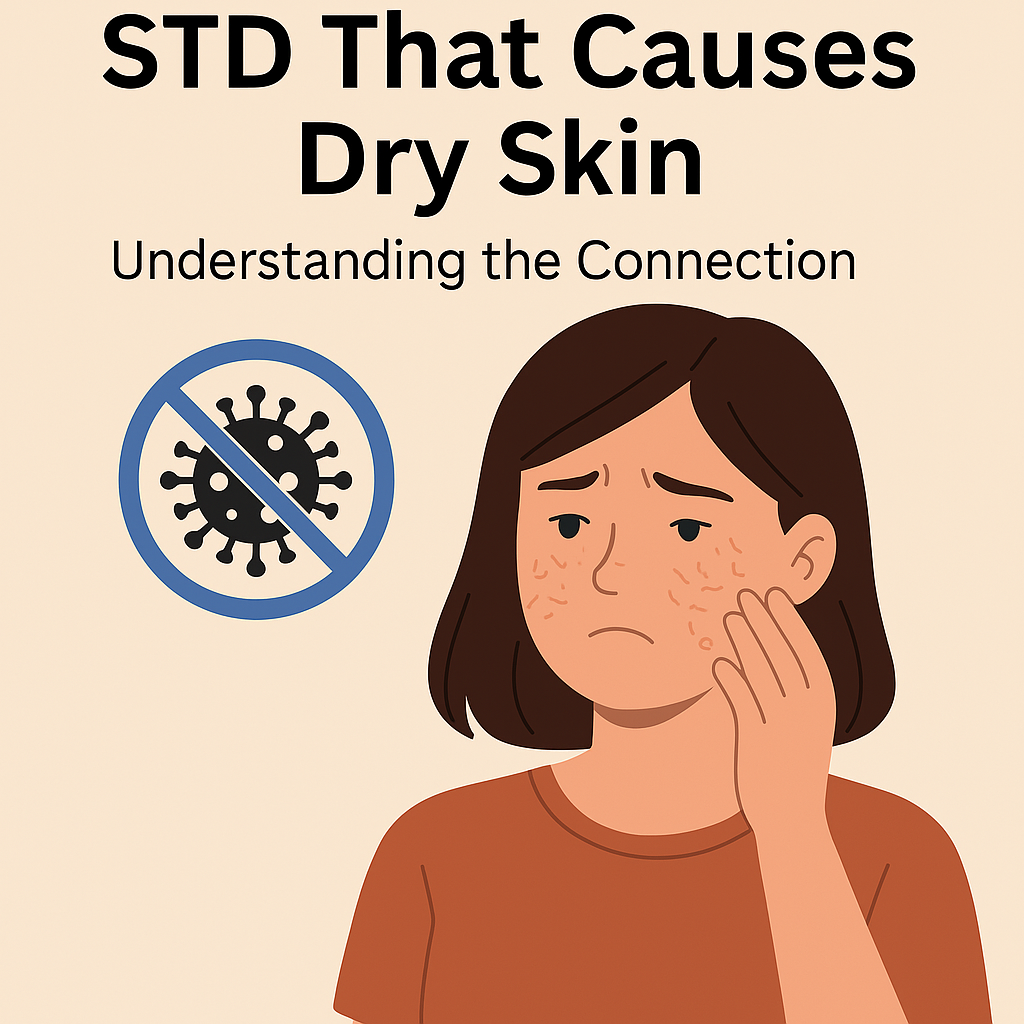Dry, flaky, or irritated skin can be caused by many things—cold weather, dehydration, or even allergies. But what if it’s something more? In some cases, sexually transmitted diseases (STDs) can lead to dry skin or skin changes, especially in and around the genital area.
In this article, we’ll break down which STDs can cause dry skin, what signs to look for, and when to see a doctor.
Can an STD Really Cause Dry Skin?
Yes, but usually it’s not just dry skin on its own. When STDs cause skin problems, they’re often part of a bigger group of symptoms, like itching, rashes, or lesions. The dry skin may appear on or around the genitals, anus, mouth, or even other parts of the body.
STDs That Can Cause Dry or Flaky Skin
1. Genital Herpes (HSV-1 or HSV-2)
- Herpes doesn’t typically cause dry skin at first
- But after a herpes outbreak, healing sores may lead to dry, scabby, or peeling skin
- The area may feel tight, itchy, or sensitive as it heals
2. Syphilis (Secondary Stage)
- Syphilis can cause a rash that looks dry, scaly, or rough
- The rash often appears on the palms of hands or soles of feet, but can show up elsewhere
- May be mistaken for eczema or psoriasis
3. HIV (Acute and Late Stages)
- Early HIV can trigger a rash with dry, red patches
- Advanced HIV can lead to skin infections, dry skin, or conditions like seborrheic dermatitis
4. Scabies (Technically not an STD but sexually transmissible)
- Caused by tiny mites that burrow under the skin
- Leads to intense itching, dry patches, and crusty rashes
- Especially found in skin folds and around genitals
5. Molluscum Contagiosum
- Causes small, dry-looking bumps that can become itchy or irritated
- As they heal, the skin may appear flaky or dry around the lesions
Other Non-STD Causes of Dry Skin
Dry skin doesn’t always mean you have an STD. Other possible causes include:
✔️ Harsh soaps or hygiene products
✔️ Allergic reactions to latex or lubricants
✔️ Skin conditions like eczema or psoriasis
✔️ Hormonal changes or stress
✔️ Dehydration or nutritional deficiencies
When to See a Doctor
See a doctor if: ✔️ The dry skin is persistent, painful, or spreading
✔️ You notice other symptoms like itching, discharge, sores, or fever
✔️ You’ve had unprotected sex or a new partner recently
✔️ The dryness is in or near your genitals, anus, or mouth
Diagnosis and Testing
✔️ Physical exam to check skin texture and symptoms
✔️ Swab or blood tests for STDs like herpes, syphilis, or HIV
✔️ Skin scrapings if scabies is suspected
✔️ Allergy or dermatology testing if needed
Treatment Options
✔️ Herpes: Antiviral medications to shorten outbreaks
✔️ Syphilis: Antibiotics like penicillin to treat the infection
✔️ HIV: Antiretroviral therapy plus treatment for skin complications
✔️ Scabies: Prescription creams to kill mites and soothe skin
✔️ Dry skin relief: Moisturizers, anti-itch creams, and avoiding irritants
Prevention Tips
✔️ Use condoms and dental dams to reduce STD risk
✔️ Get tested regularly and encourage your partner to do the same
✔️ Avoid sharing personal items like towels or razors
✔️ Treat skin gently—use fragrance-free soaps and moisturizers
Final Thoughts
Dry skin might seem harmless—but when it shows up with itching, irritation, or genital discomfort, it’s worth looking into. Some STDs can cause skin changes that look dry, flaky, or rough, especially during healing or rash phases.
💙 Pay attention to your skin—it can be the first sign that something’s off.
When in doubt, talk to a doctor and get tested.
Related Reads
References
- CDC – Herpes: cdc.gov/std/herpes
- CDC – Syphilis: cdc.gov/std/syphilis
- CDC – HIV Symptoms: cdc.gov/hiv
- CDC – Scabies: cdc.gov/parasites/scabies
- Mayo Clinic – Molluscum Contagiosum: mayoclinic.org

Leave a Reply